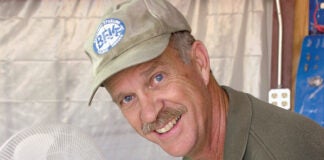What’s New
Paradise Aircraft introduces a new LSA, there's a new fiberglass panel for the Glasair Glastar or Sportsman, and Fisher Flying Products is under new ownership; edited by Mary Bernard.
25th Anniversary: Homebuilts – The Enduring Soul of Innovation
This month we reflect on the changes we've seen over a quarter century of covering the homebuilt aircraft world; by Cindy Pedersen.
Ask the DAR
This month we address the question of where flight-test areas may be and how they may be structured;
Light Stuff
The next revolution in recreational aircraft is coming, and its electric! This is evidenced by Randall Fishmans ElectraFlyer-C electric-powered aircraft, which flew at last years AirVenture Oshkosh; by Dave Martin.
Letters
Starter SauceRegarding Amy Labodas experience with the purge valve in her RV-10, I also use an Airflow Performance experimental fuel-injection system on the IO-360-B1B...
Build Your Skills: Fabric
Finishing tapes not only strengthen areas that need reinforcement, but they also cover unsightly screws, rivets and rib-lacing cord. This month we cover the types of tapes available, where they should be applied and how to apply them; by Ron Alexander.
To Launch a Light Sport
It’s amazing what a little light will reveal, in this case a planned hole for the wing that would have been dangerously close to the wingspar. No worries. The problem was remedied, and it was on to fixing flaws in the wing’s surface and working on the nosewheel and front suspension; by Bob Fritz.
Aero ‘lectrics
This month we get into actually building the portable antenna that was described last month;
Wind Tunnel
In order to bank the airplane and execute a turn properly, adverse yaw must be countered or eliminate altogether. The discussion of how to do this includes rudder control, aileron-rudder interconnects, directional stability, differential ailerons, aileron drag and the use of spoilers;
Wag-Aero Sport Trainer
Builder Dave Klages’ Wag-Aero Sport Trainer remains faithful in most ways to the J-3 Cub that inspired it; by Marc Cook.











